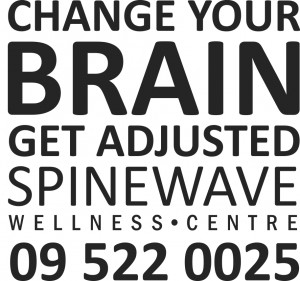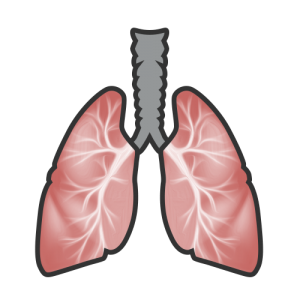 Asthma, explained by dysfunction of the autonomic nervous system: the “other-way-round” theory.
Asthma, explained by dysfunction of the autonomic nervous system: the “other-way-round” theory.
Now as a full time practitioner doing postgraduate work in the autonomic nervous system, I would have treated my 6-year old asthmatic self quite differently, knowing what I now know. After all those hospital visits and years of drugs, I would have suggested other ideas to my mother.
- Asthma is driven by a hyperactive parasympathetic nervous system.
- Corticosteroids can have long term damaging effects on the body.
- Specific spinal adjustments are imperative in asthma management.
Nervous system control of the airways is not normal in asthmatic patients1. This creates “neurogenic inflammation”: bronchoconstriction, mucous secretion, coughing and wheezing because the bronchial walls have become too big for air to easily pass through.
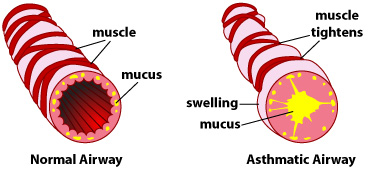
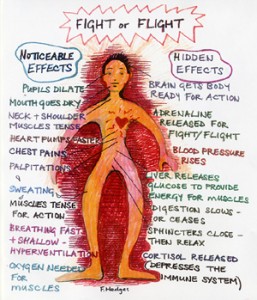 To understand what I’ve dubbed the “other-way-round” theory, you need to know what sympathetic nerves do and what parasympathetic nerves do. General convention describes the sympathetic nervous system as the fight/flight response (click image to enlarge) and the parasympathetic system as resting/digesting, which is what most people know. While this is true, it is only true for the end-organs that these nerves fire to. Both systems have the ability to turn things on or turn things off.
To understand what I’ve dubbed the “other-way-round” theory, you need to know what sympathetic nerves do and what parasympathetic nerves do. General convention describes the sympathetic nervous system as the fight/flight response (click image to enlarge) and the parasympathetic system as resting/digesting, which is what most people know. While this is true, it is only true for the end-organs that these nerves fire to. Both systems have the ability to turn things on or turn things off.
You’d think because of the sing-song rhyme that sympathetic nerves would cause constriction, and parasympathetic nerves dilation? When it comes to the airways, it’s the “other-way-round”.
The bronchial airways are mostly innervated by the parasympathetic pathways2. They operate automatically when you breathe in and breathe out. There are actually very few sympathetic connections to the tracheobronchial airways. The only part of the autonomic nervous system firing when breathing is the parasympathetic division.
Recent research has shown that asthmatics have a hyperactive parasympathetic nervous system3. Counter-intuitively, it’s actually a runaway resting/digesting system.
When the autonomic nervous system becomes dysfunctional, the parasympathetic nerves fire more, and because they connect directly to the smooth muscle of the airways, constriction results. This can start as high as the brainstem.
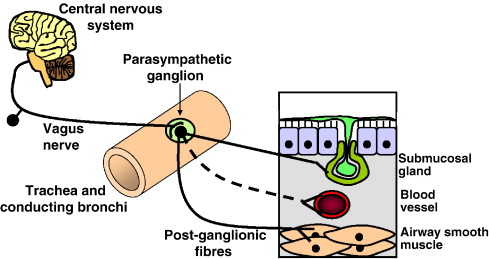
Many other health problems come about when the sympathetic (fight/flight) system fires more to try compensate for the hyperactive parasympathetic system. However, sympathetic nerves have no direct connection to the lungs so can’t solve the asthma problem.
The wisdom of the body attempts to stimulate dilation of the airways by pumping out stress hormones like adrenalin and noradrenalin. This is why inhalers work so well in the short term.
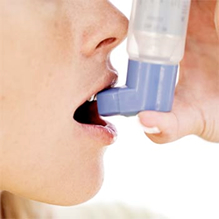 Corticosteroids activate the sympathetic nervous system to dilate the lungs, doing so via the blood stream. While parasympathetic nerves connect directly to the smooth muscle (shown above), sympathetic responses are achieved via receptors which lie on the outside of the smooth muscle. These receptors turn on when steroids move through the blood. The lungs are abundantly filled with these receptors, called beta receptors, which inhaler medication has an affinity for, making it fast-acting.
Corticosteroids activate the sympathetic nervous system to dilate the lungs, doing so via the blood stream. While parasympathetic nerves connect directly to the smooth muscle (shown above), sympathetic responses are achieved via receptors which lie on the outside of the smooth muscle. These receptors turn on when steroids move through the blood. The lungs are abundantly filled with these receptors, called beta receptors, which inhaler medication has an affinity for, making it fast-acting.
But what effect does filling the body with inhalers and steroids have long term?
When the inhaler wears off, there is a return of parasympathetic hyperactivity and bronchoconstriction, which may even be increased4. If this is countered with further doses of bronchodilator, a pattern of dependence can start, aggravating the asthma it is intended to control. The dose required for control may then need to be increased even more.
One in six New Zealand adults and one in four children experience asthma symptoms5. And while symptoms are “managed” by stimulating the sympathetic nervous system to dilate the airways with steroids, the cause of parasympathetic hyperactivity persists. There is nothing safe or less troublesome about inhaling corticosteroids over those given orally. Inhaled corticosteroids are associated with all of the damaging side effects of oral steroids, including:
Coughing and husky voice, dry mouth and thirst, candida infections, muscle weakness, headache, light-headedness, stomach upset, tiredness, restlessness, mood swings, growth suppression, poor bones density, adrenal suppression, allergies, indigestion and specific damage to the fundamental part of the brain in charge of memory, the hippocampus. This leads to asthmatic children experiencing higher incidences of depression, ADHD and behavioural problems, negatively impacting the child’s ability to cope6. Corticosteroids also deplete calcium, folic acid, magnesium, potassium, selenium, vitamin C, vitamin D and zinc.
How asthma comes about through allergenic responses is well understood. “Neurogenic inflammation” causing all the symptoms of asthma can start with problems in the way immune cells react, which is why irritants like tobacco smoke, dust mites, animal hair and the like can trigger attacks. Research is even starting to show now how antibiotic exposure before 6 months of age is associated with asthma and allergies at 6 years of age7. However, regardless of cause, the management of asthma is poor, at best. The underlying problem of a dysfunctional autonomic nervous system still exists.
 If I had been able to explain all this to my mother when I was 6 years old, I would have told her chiropractic adjustments have the ability to fundamentally change the way the nervous system works and improve asthma symptoms8; I would have had a far healthier childhood and probably done better at school. Knowing what I now know, I would also tell chiropractors to drive sympathetic activity up until the body reaches autonomic balance. Only then can the body start to heal.
If I had been able to explain all this to my mother when I was 6 years old, I would have told her chiropractic adjustments have the ability to fundamentally change the way the nervous system works and improve asthma symptoms8; I would have had a far healthier childhood and probably done better at school. Knowing what I now know, I would also tell chiropractors to drive sympathetic activity up until the body reaches autonomic balance. Only then can the body start to heal.
This testimonial is for asthma and COPD sufferers – in other words, chronic obstructive pulmonary disease. This complaint comes on top of grief and emotion with the recent passing of my husband plus intractable back pain and it has not been very easy to live with.
Since I have been referred to Neil my progress has been outstanding. After 20 years, I no longer need my inhalers and I can walk without shortness of breath. My back has been adjusted to enable me to walk without limping. I cannot thank Neil enough for my improvements and wellness. He handles the body’s adjustments with great ability.
The greeting on the front desk from Pip adds icing to the cake. Give Spinewave a try. You will not be disappointed – Sharen Rudin.
© Dr Neil Bossenger 2013
References:
- Hulsmann A.R., Autonomic innervation of human airways: structure, function, and pathophysiology in asthma. Neuroimmunomodulation. 1999 May-Jun;6(3):145-59.
- Janig, W. The Integrative Action of the Autonomic Nervous System: Neurobiology of Homeostasis. doi.org/10.1017/CBO9780511541667.011
- Devi, T. et al. A study of the sympathetic nervous system in bronchial asthma. Journal of Medical Society. 2012. Vol 26. Issue 3.
- Strube, G. Should steroids be the first line treatment for asthma? BMJ. 2000;320:47–9.
- Beasley R. The Burden of Asthma in New Zealand. Report produced for the Asthma and Respiratory Foundation of New Zealand. December, 2001.
- University of Virginia Health System. Children With Asthma Often Suffer Developmental And Behavioral Problems. April, 2007.
- Belanger, K. et al. Antibiotic Exposure by 6 Months and Asthma and Allergy at 6 Years: Findings in a Cohort of 1,401 US Children. American J. Epidemiology. 2010. doi: 10.1093/aje/kwq400
- Alcantara, J. The chiropractic care of patients with asthma: a systematic review of the literature to inform clinical practice. Clinical Chiropractic. Volume 15, Issue 1, March, 2012. Pages 23–30.

